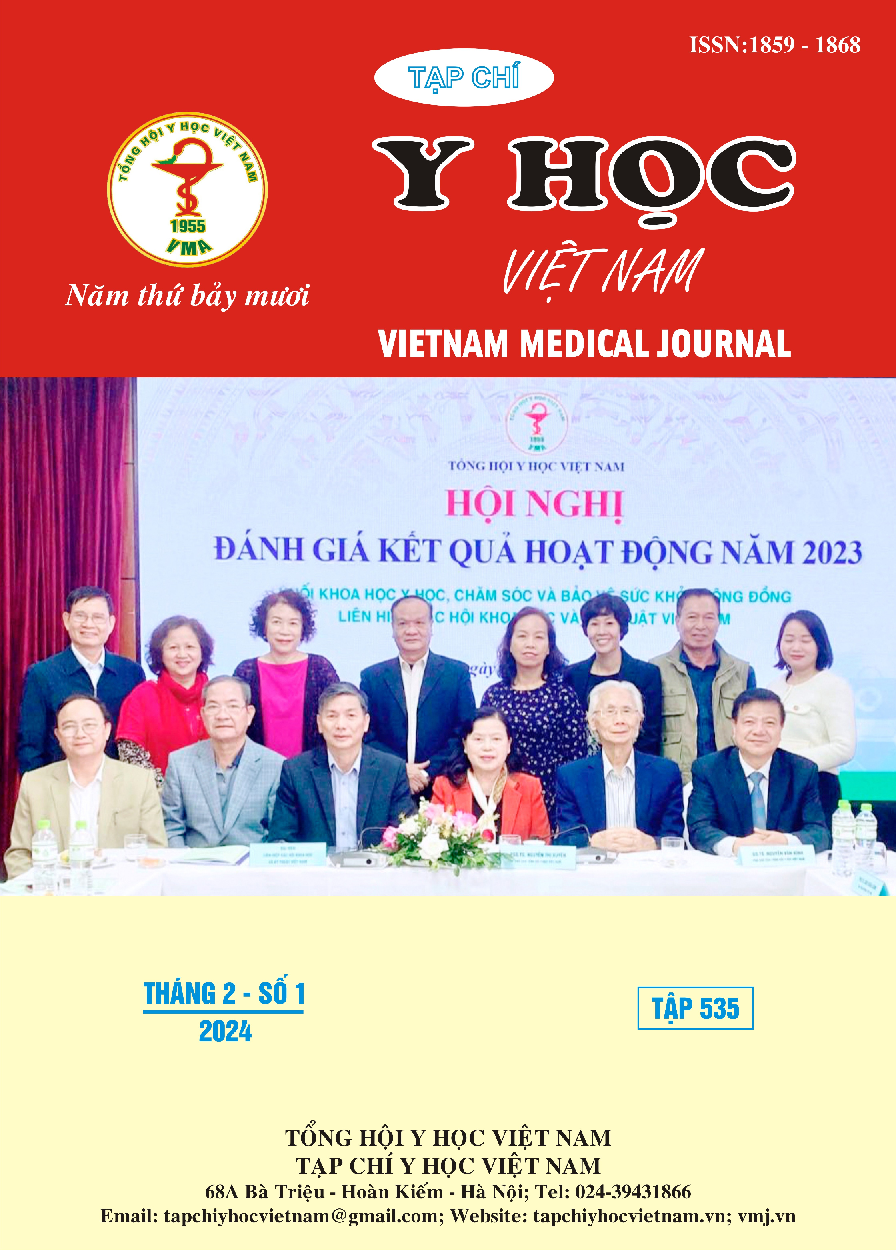TÌNH HÌNH SỬ DỤNG CÁC PHƯƠNG PHÁP ĐIỀU TRỊ Y HỌC CỔ TRUYỀN TRÊN NGƯỜI BỆNH THOÁI HOÁ CỘT SỐNG CỔ
Nội dung chính của bài viết
Tóm tắt
Mục tiêu: Khảo sát tình hình sử dụng các phương pháp điều trị Y học cổ truyền (YHCT) trên người bệnh Thoái hoá cột sống cổ theo hội chứng lâm sàng Y học cổ truyền. Đối tượng và phương pháp nghiên cứu: Nghiên cứu cắt ngang mô tả hồi cứu. Thu thập dữ liệu từ 401 hồ sơ bệnh án nội trú có chẩn đoán Thoái hoá cột sống cổ tại bệnh viện Y học cổ truyền thành phố Hồ Chí Minh năm 2022, tiến hành thống kê và phân tích tỷ lệ sử dụng các phương pháp điều trị YHCT theo từng hội chứng lâm sàng. Kết quả: Tỷ lệ người bệnh (NB) dùng thuốc YHCT chiếm 99,50%, gồm sử dụng thuốc thang (60,85%); thuốc thành phẩm (91,27%). Cách thành lập bài thuốc: đối pháp lập phương (41,80%), cổ phương gia giảm (27,46%), cổ phương (30,74%), sự khác biệt giữa các hội chứng lâm sàng không có ý nghĩa thống kê (P > 0,05). Có 100% NB sử dụng phương pháp không dùng thuốc (PPKDT). Có 9 PPKDT được sử dụng trong điều trị gồm: điện châm (96,76%), thủy châm (48,38%), cấy chỉ (34,41%), bó thuốc (11,04%), xoa bóp bấm huyệt (8,98%), chườm (7,98%), cứu (5,99%), hào châm (2,49%), ôn châm (0,25%). Đa số NB được sử dụng kết hợp giữa phương pháp dùng thuốc (PPDT) và PPKDT; chiếm 52,37%, kết hợp các phương pháp điều trị theo hội chứng lâm sàng khác biệt có ý nghĩa thống kê (P < 0,05). Kết quả điều trị ghi nhận tỷ lệ đỡ/khỏi hoàn toàn là 96,75% và 3,34% không thay đổi kết quả điều trị, sự khác biệt giữa các hội chứng lâm sàng có ý nghĩa thống kê (P < 0,05). Kết luận: Thuốc thành phẩm được sử dụng nhiều nhất trong PPDT và điện châm trong các PPKDT. Đa số NB được sử dụng kết hợp giữa PPDT và PPKDT đem lại hiệu quả điều trị cao.
Chi tiết bài viết
Tài liệu tham khảo
2. Lê Bảo Lưu, Nguyễn Trương Minh Thế. Phương tễ học. Nhà xuất bản Y học. 2021.
3. Võ Thị Mỹ Phương. Đánh giá hiệu quả giảm đau trong điều trị thoái hoá cột sống cổ bằng phuơng pháp cấy chỉ kết hợp tập vận động cổ đơn giản. Luận văn Thạc sĩ Y học. Đại học Y dược Thành phố Hồ Chí Minh. 2017.
4. Chen B. Acupotomy versus acupuncture for cervical spondylotic radiculopathy: protocol of a systematic review and meta-analysis. BMJ Open. 2019; 9(8).
5. Pan SL, Zheng SL, Zhou XH, Wang QL. Acupuncture combined with Jingtong granule for nerve-root type cervical spondylosis and its effects on IL-6, TNF-α, IL-1β and hemorheological indexes. Zhongguo Zhen Jiu. 2019;39(12):1274-1278.
6. Rydman E. Quantifying cervical spondylosis: reliability testing of a coherent CT-based scoring system. BMC Med Imaging. 2019;19(1):45.
7. Yang F, Li WX. Balance chiropractic therapy for cervical spondylotic radiculopathy: study protocol for a randomized controlled trial. Trials. 2016; 17(1):513.


